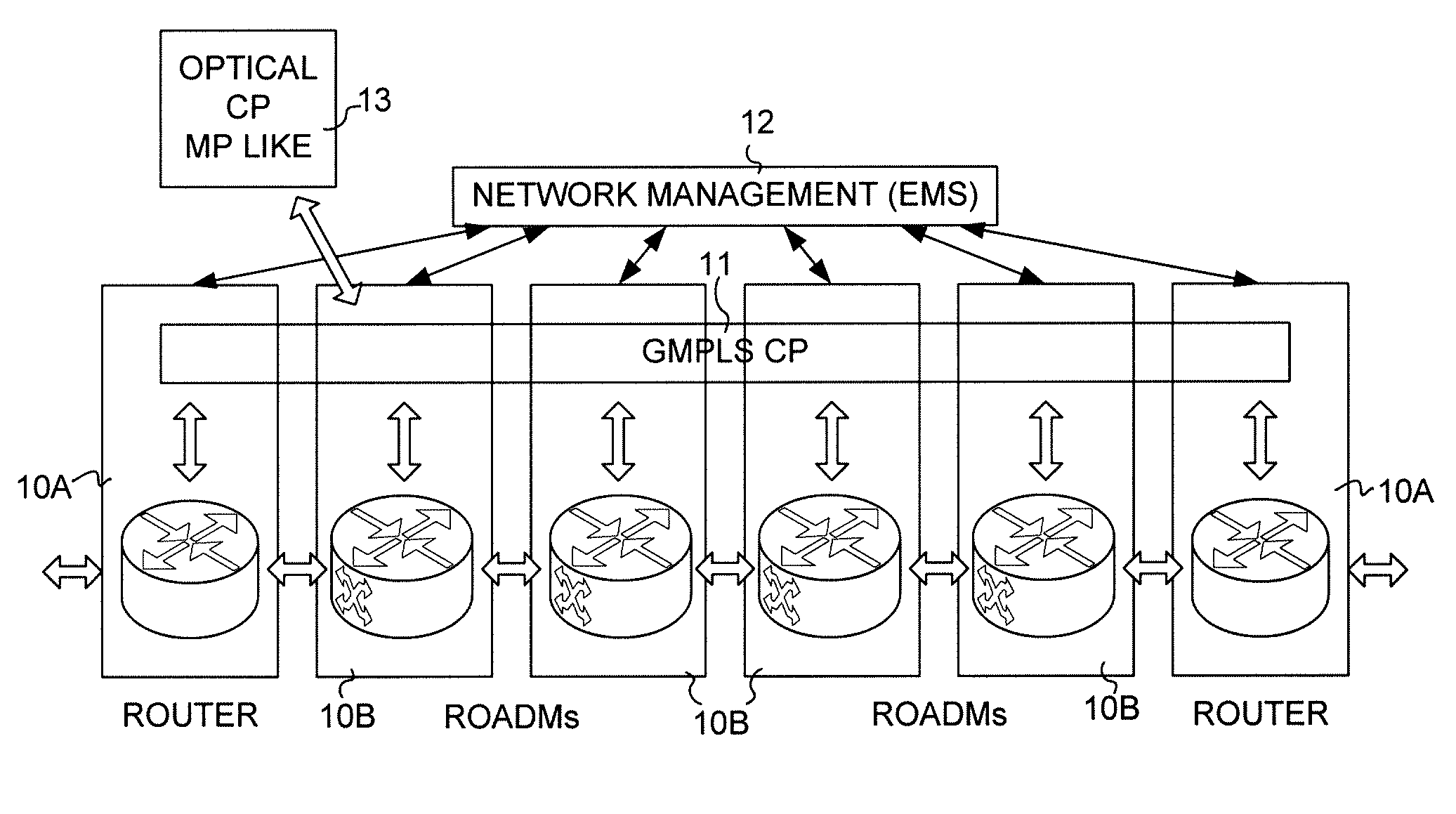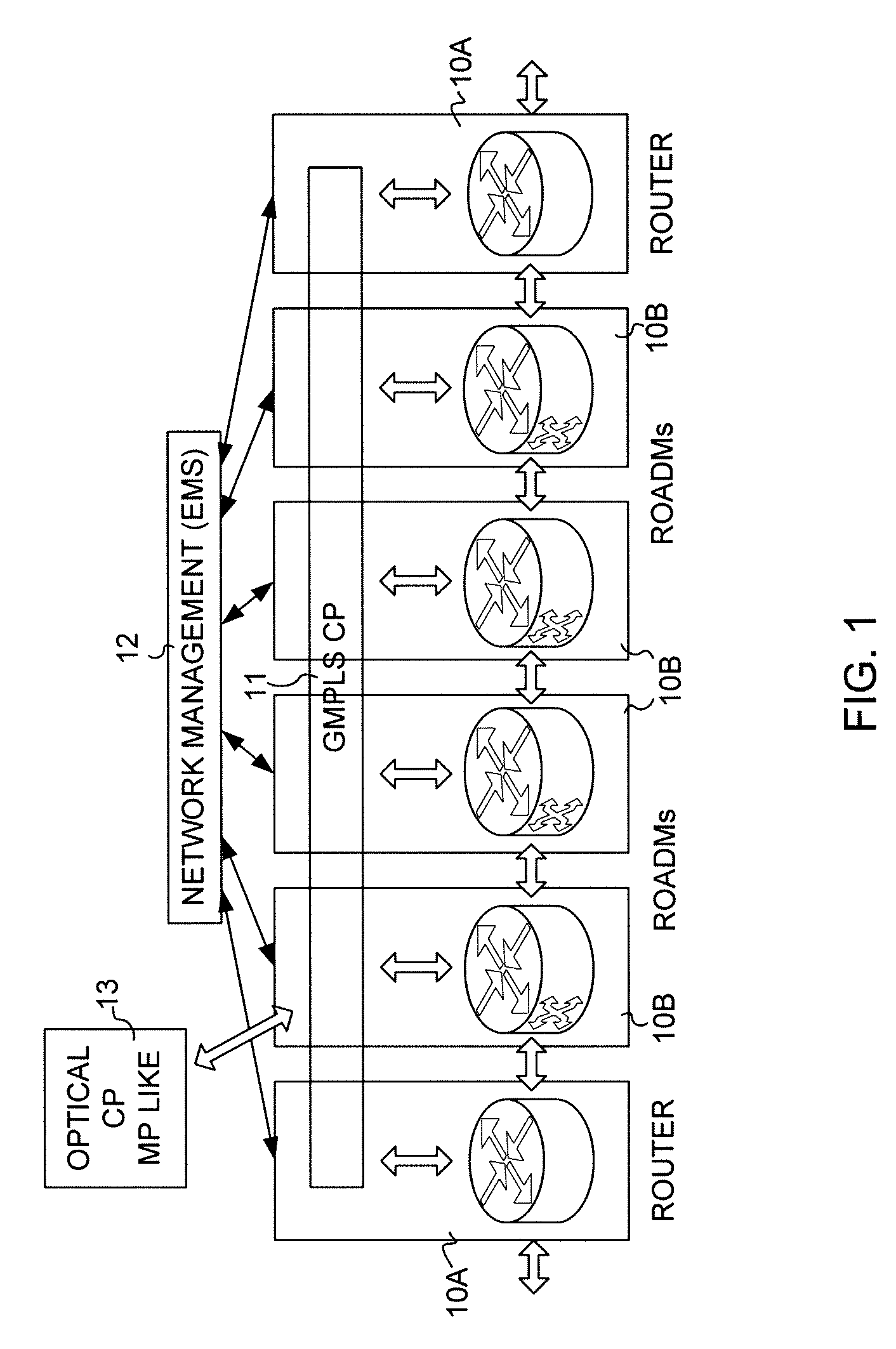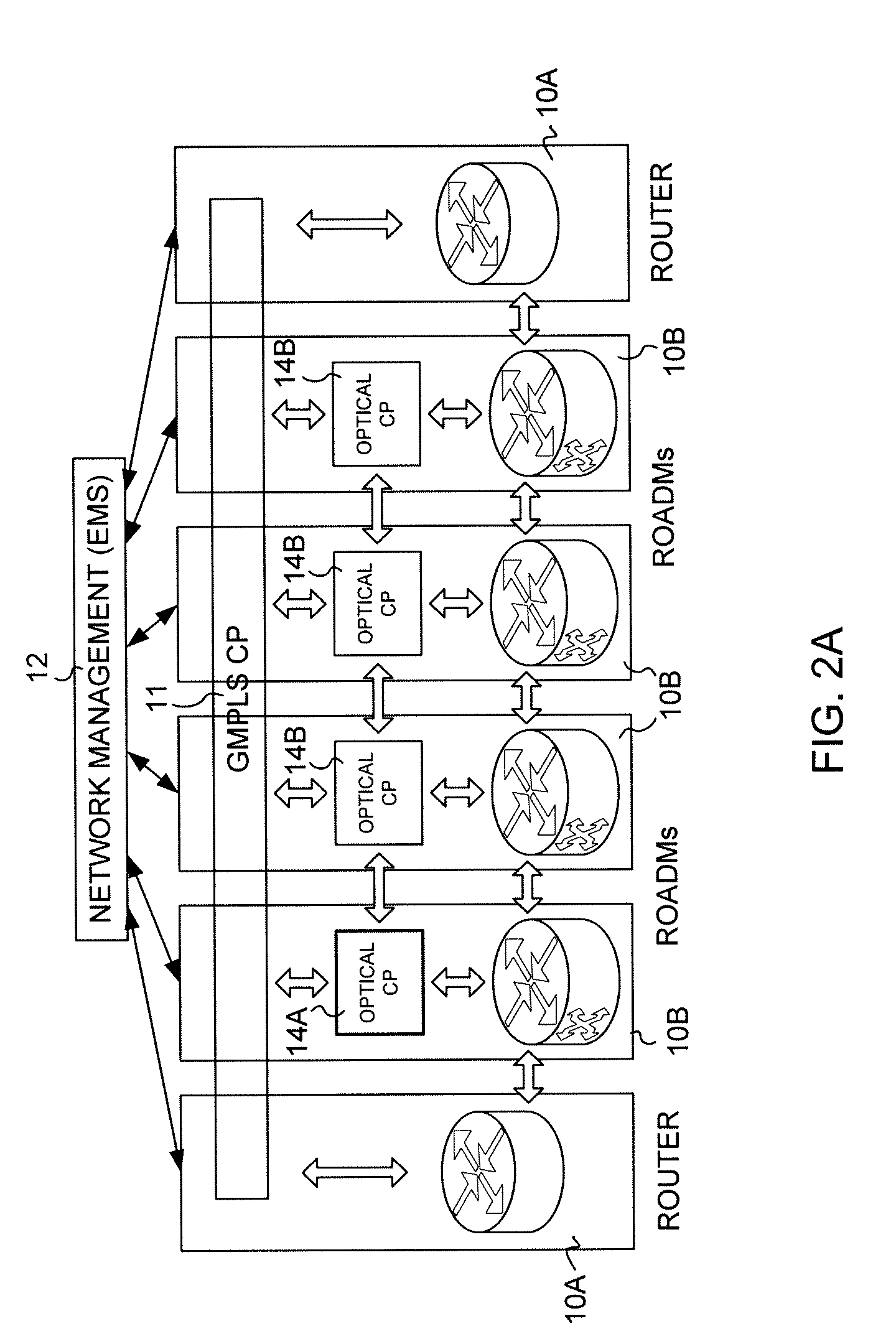Adaptive Hybrid Optical Control Plane Determination of Lightpaths in a DWDM Network
a hybrid optical control and lightpath technology, applied in multiplex communication, electrical equipment, transmission, etc., can solve the problems of affecting the operation of the network, slowing down the routing operation,
- Summary
- Abstract
- Description
- Claims
- Application Information
AI Technical Summary
Problems solved by technology
Method used
Image
Examples
example embodiments
[0016]A representative DWDM network is illustrated in FIG. 1. The nodes 10 of the optical network are represented by router nodes 10A and add / drop nodes 10B in the form of ROADMs (Reconfigurable Optical Add / Drop Multiplexers). Typically OADMs (Optical Add / Drop Multiplexers) imply that optical signals of one or more fixed wavelengths are dropped and / or added at the node and that ROADMs imply that the added and / or dropped wavelengths at the node can be changed or reconfigured. The ROADMs are shown in the drawings for purposes of generality and should not be considered a limitation.
[0017]In an optical network routers handle the main switching functions of the optical network at the nodes 10A. The add / drop nodes 10B provide entry (add) and exit (drop) points to the network. Hence source and destination nodes of a message in the FIG. 1 network are the add / drop nodes 10B. While only four of add / drop nodes 10B are shown, these are merely representative of the nodes 10B in the network. Arro...
PUM
 Login to View More
Login to View More Abstract
Description
Claims
Application Information
 Login to View More
Login to View More - R&D
- Intellectual Property
- Life Sciences
- Materials
- Tech Scout
- Unparalleled Data Quality
- Higher Quality Content
- 60% Fewer Hallucinations
Browse by: Latest US Patents, China's latest patents, Technical Efficacy Thesaurus, Application Domain, Technology Topic, Popular Technical Reports.
© 2025 PatSnap. All rights reserved.Legal|Privacy policy|Modern Slavery Act Transparency Statement|Sitemap|About US| Contact US: help@patsnap.com



